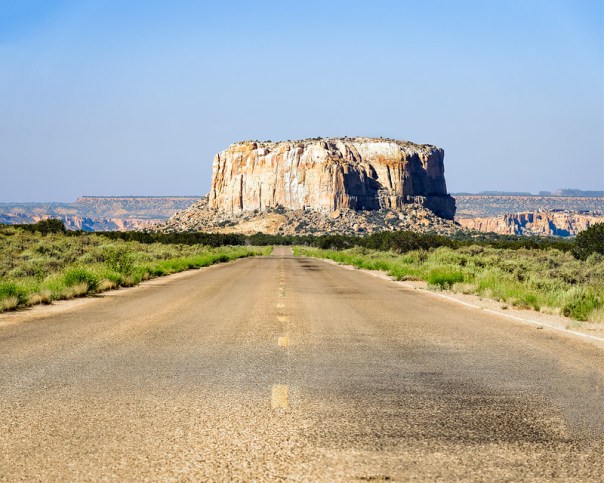The birds we saw in New Mexico varied from what we’re used to in Florida (of course). I saw 12 life birds while we were there. And this was really with just casual birding. I’m sure my more serious birding friends (thinking of you Kevin M.) would have found many more!
 Gambel’s Quail – Bosque del Apache National Wildlife Refuge
Gambel’s Quail – Bosque del Apache National Wildlife Refuge
MK wanted to visit White Sands National Monument. I did too, but I’d heard a lot about the Bosque del Apache National Wildlife Refuge so we agreed to get up early and stop by there on the way. I was really glad we did!
 Black-chinned Hummingbirds and Broad-tailed Hummingbird (on the left) – Bosque del Apache National Wildlife Refuge
Black-chinned Hummingbirds and Broad-tailed Hummingbird (on the left) – Bosque del Apache National Wildlife Refuge
The volunteers at the Visitors Center were very helpful and pointed out where to look for the Golden Eagle. We would have missed it without their help. At first glance, I mistook it for a vulture! They also apologized since there were no Sand Hill Cranes (they migrate through in the winter). I assured them that we see plenty in Florida. Hopefully I can go back when it’s cold. Seeing huge flocks of cranes would be an experience!
 Golden Eagle – Bosque del Apache National Wildlife Refuge
Golden Eagle – Bosque del Apache National Wildlife Refuge
MK was an excellent spotter. We found the Caissin’s Kingbird when she stopped to look at a road side field on the way home from White Sands. She also found the Yellow Warbler at the top of Sandia Peak – thanks MK!
 Caissin’s Kingbird – Carrizozo, NM
Caissin’s Kingbird – Carrizozo, NM
I’ve called myself a “beginning” birder for too long. Maybe it’s time to change this to “casual” birder. I like birding and enjoy finding / seeing new birds and figuring out what they are. But I mostly enjoy the photography and get a bit disappointed if my images are poor. So, from me to you, here are my…
Birding hints from a casual birder:
- Take advantage of travel. New locations can be an easy way to add to your life list.
- Consider going even if it’s a slow time of year. Bosque is well-known for its Festival of the Cranes in November. But we found lots to see even in the middle of summer.
- Research the local hot spots and add some to your itinerary. Find and check local sightings or species lists so you’ll know what to look for. I read through the wildlife list on the Bosque web site before we went. It lists bird species by month observed and was a big help.
- Try to look at the right times of day when birds are more active. We saw the Yellow Warbler near dusk on Sandia peak, and had good luck at Bosque early in the morning. I strongly doubt we’d have seen as much in mid-afternoon.
- Stop by the Visitors Center and talk to other birders there. The volunteers at Bosque were very helpful.
- Don’t let birds you’re familiar with fool you. I might have missed the Golden Eagle and the Neotropical Cormorants if I hadn’t been looking for them. They look similar to other birds I’m familiar with in Florida.
- A second set of eyes is very helpful. With two of us looking, MK and I saw more than we would have by ourselves.
- Birding friends are helpful too. I probably could have figured out what all the life birds were on my own, but it was faster with Kevin helping. And having a second opinion is good too.
- Photograph everything you see and confirm later. I wasn’t sure about the Golden Eagle until I enlarged the image on the back of my camera.
- If you think you might be birding, bring your long lens. I didn’t and regret that. Thinking back on it, I should have left my ultra-wide at home and taken my longest lens instead. You can always stitch multi-frame panoramas to get a wider field of view. But you can’t get a longer focal length in post processing without losing quality.
I never expected to see so much – it was a great trip! Here’s what we saw:
Life birds: Golden Eagle, Gambel’s Quail, Black-chinned Hummingbird, Broad-billed Hummingbird, Ring-necked Pheasant, Neotropic Cormorants, Swainson’s Hawk, Cassin’s Kingbird, Say’s Phoebe, Black Phoebe, House Finch, Yellow Warbler
Other birds: Blue Grosbeaks (M & F), Crows, Common Ravens, Brown-headed Cowbirds, House Sparrows, Mockingbirds, Red-winged Blackbirds, Road Runner, Barn, Tree, and Cliff Swallows, Wild Turkeys, Canada Geese, Blue Wing Teals, American Coot, Pied-billed Grebe, Great Blue Herons, Turkey Vulture, Mourning Dove, Robin, Grackles, …
Other wildlife: Prairie Dogs, Snakes (no ID, although one roadkill might have been a Rattlesnake), Deer, Rabbit
You can see more of my New Mexico images here: https://www.flickr.com/photos/edrosack/albums/72157685850604925
Thanks for stopping by and reading my blog. Now – go do some casual birding, and make some photos!
©2017, Ed Rosack. All rights reserved











































